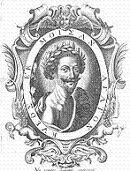



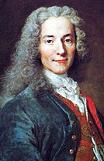
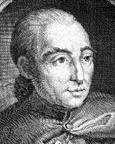





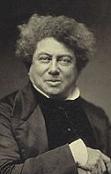

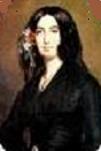


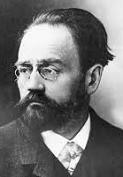



















TLW's French Novelist Historyscope |
By T.L. Winslow (TLW), the Historyscoper™ |
© Copyright by T.L. Winslow. All Rights Reserved. |
,
Original Pub. Date: Aug. 11, 2015. Last Update: May 2, 2019. |




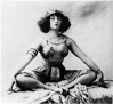



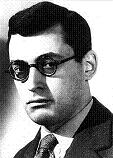
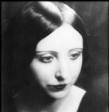

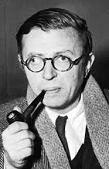


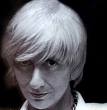


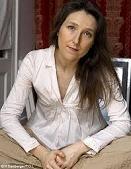
Westerners are not only known as history ignoramuses, but double dumbass history ignoramuses when it comes to French novelist history. Since I'm the one-and-only Historyscoper (tm), let me quickly bring you up to speed before you dive into my Master Historyscope.

On June 15, 1467 Philip III the Good (b. 1396) dies, and his son Charles the Bold (1433-77) becomes the last reigning duke (Jan. 5, 1477) of (not Bar, not Berry, but) Burgundy, which controls the Low Countries and other territories as well, and is a rival to Louis XI of France; the Cent Nouvelles Nouvelles (Hundred New Short Stories), a collection of bawdy stories exchanged by Philip III the Good and his courtiers is left to posterity, and ed. by Antoine de la Sale (1385-1461), becoming the first work of lit. prose in French.

In 1532 Paris-born Renaissance humanist, Greek scholar, monk, physician, and satirist-humorist Francois Rabelais (1494-1553) pub. Les Grandes et Inestimables Cronicques du Grand et Enorme Geant (Énorme Géant) Gargantua (The Grand and Inestimable Chronicles of the Great and Enormous Giant Gargantua) (July); an almanac making fun of astrologers, which becomes a hit, causing him to issue in Oct. the sequel Pantagruel, Bk. 1 about Gargantua's son, followed by a rewrite of Gargantua (1533); both books become giant hits, all pub. under the anagram Alcofribas Nasier, and repub. in 1548 and 1550; the chars. Panurge, Picrochole, and Frere Jean bring out the conflict between humanism and religion, and express the ideas that Euro thinkers are thinking but are afraid to admit to; coins hundreds of new French words, some of which become part of the language; the censors of the Sorbonne label it as obscene, making it more popular?

In 1607-27 Marseille-born novelist Honore d'Urfe (Honoré d'Urfé), Marquis de Valromey, Comte de Chateauneuf (Châteauneuf) (1568-1625) pub. his first novel L'Astree (L'Astrée) (60 vols.), "the novel of novels", about 5th cent. shepherd Celadon (Céladon) and shepherdess Astree (Astrée) (named after Astraea) in Forez, becoming an internat. hit and the most influentlial work of 17th cent. French lit., causing the word "celadony" to be coined for pure spiritual love.

In 1651-7 Paris-born Paul Scarron (1610-60) (AKA Monsieur Scarron) pub. Roman Comique, about a co. of strolling players led by narrator Destin, in a picaresque style a la Cervantes' "Don Quixote". In 1652 he marries Madame de Maintenon (Francoise d'Aubigne), who later becomes the secret 2nd wife of Louis XIV.

In 1662 Madame de La Fayette (Marie-Madeleine Pioche de La Vergne, Comtesse de La Fayette) (1634-93) anon. pub. her first novel The Princess of Montpensier (La Princesse de Montpensier), a roman a clef about an adulterous love affair in the court of Louis XIV. In Mar. 1678 she anon. pub. The Princess of Cleves (La Princesse de Clèves), a big hit set in the court of Henry II of France in Oct. 1558-Nov. 1559, becoming the first French historical novel, about 16-y.-o. heiress Mademoiselle de Chartres, who marries the Prince de Cleves then falls for the dashing Duke de Nemours; prototype of the psychological novel. She dies on May 25, 1693 in Paris, leaving La Comtesse de Tende (pub. in 1718), Histoire d'Henriette d'Angleterre (pub. in 1720), and Memoires de la Cour de France (pub. in 1731).

In 1699 Francois de Salignac de la Mothe-Fenelon (de la Mothe-Fénelon) (1651-1715), archbishop of Cambrai pub. The Adventures of Telemachus, The Son of Ulysses (Les Aventures de Télémaque); pub. anon.; the educational travels of Ulysses son, accompanied by his tutor Mentor, who is revealed to be Minerva, goddess of wisdom in disguise; how kings exist for their subjects, war is wrong, and all nations are brothers; Louis XIV is not amused, and combined with his siding with Bossuet over the quietism thingie he exiles him to his diocese of Cambrai, where he spends the rest of his life with his pupil Burgundy grinding out letters criticizing the French govt.; repub. by his family in 1717 - no doggie day care center license for vous?

In 1731 Hesdin, Artois-born Benedictine monk Antoine Francois Prevost (Prévost) d'Exiles (d. 1763) (Abbé Prévost) pub. Le Philosophe Anglais, ou Histoire de Monsieur Cleveland, fils naturel de Cromwell, écrite par lui-même, et traduite de l'anglais (8 vols.) (1731-9) (Paris); English trans. pub. in 1734. In 1731 he pub. Histoire du Chevalier des Grieux et de Manon Lescaut (Paris); vol. #7 of "Memoires et Aventures d'un Homme de Qualite"; about fickle luxury-loving French babe Manon, who attracts brilliant student Chevalier des Grieux, and rieunx, er, ruins his career; after she is transported to America, he follows her, fights a duel with the La. gov.'s son, is imprisoned, and escapes to the desert, where she dies in his arms; turned into an opera in 1884 by Jules Massenet, and again in 1893 by Giacomo Puccini.

In 1731 Paris-born novelist-dramatist Pierre Carlet de Chamblain de Marivaux (1688-1763) begins pub. La Vie de Marianne (11 vols.) (1731-42) (unfinished). In 1735 he writes Le Paysan Parvenu (unfinished); poor peasant boy Jacob de Valle leaves for Paris, fends off servant Genevieve, and makes good.

In 1752 Paris-born Voltaire (Francois-Marie Arouet) (1694-1778) pub. Micromegas (Micromégas), about 20K-ft.-tall aliens Saturn and Sirius, who visit Earth and become amused at how self-important miniscule earthlings are, pioneering sci-fi. In 1756 he pub. Plato's Dream, about Demiurgos the Eternal Geometer, who tasks "lesser superbeings" to create their own worlds, with Demogorgon creating Earth, which the other superbeings laugh at as imperfect, embarrassing Demiurgos, who had declared himself the only being capable of creating perfection and had obviously goofed with his lesser superbeings. In 1759 he pub. Candide; or, Optimism, a satire of Leibniz's statement that "All is for the best in this the best of all possible worlds", starring Candide (Lat. "candidus" = shining white), nephew of Baron Thunder-ten-Tronckh of Westphalia, who is in love with the baron's daughter Lady Cundegone, and is being taught Leibnizian optimism by his syphilitic tutor Pangloss (Lat. "all tongues") while experiencing the horrible real world, incl. the Seven Years' War, the Inquisition, and the 1755 Lisbon Earthquake with his companions Cundegone, chambermaid Paquette, Martin, and Brother Giroflee, visiting Buenos Aires, Paraguay, El Dorado, Suriname, Cadiz, Venice, Bordeaux, Transylvania, and Bonnie Prince Charlie, finally settling on the motto "We must cultivate our garden."

In 1757 Paris-born actress-turned-novelist Marie-Jeanne Riccoboni (Laboras de Mezieres) (1713-92) pub. Letters of Mistress Fanni Butlerd (Lettres de Mistriss Fanni Butlerd). In 1758 she pub. Story of the Marquis de Cressy (Histoire du Marquis de Cressy). In 1759 she pub. Letters of Milady Juliette Catesby (Lettres de Milady Juliette Catesby), which makes a fan of Voltaire; English trans. by Frances Brooke pub. in 1760. In 1765 she pub. The Story of Ernestine (L'Histoire d'Ernestine) (her masterpiece?). Too bad, the French Rev. deprives her of her small royal pension, and she dies in great poverty.


In 1764 after she turns down Edward Gibbon, Jacques Necker marries poor Swiss girl Susanne (Suzanne) Curchod, who becomes Madame Necker (1737-94), and goes on to give birth to Madame Germaine de Stael (1766-1817), encourage her hubby's govt. career, and found a top lit. salon in Paris, attended by Georges Louis Leclerc, Comte de Buffon (1707-88), Friedrich Melchoir, Baron von Grimm (1723-1807), Gabriel Bonnot de Mably (1709-85), Jean Francois Marmontel (1723-99), Jean Francois de La Harpe (1739-1803), Jacques Henri Bernardin de Saint-Pierre (1737-1814), Jean Le Rond d'Alembert (1717-83), and Denis Diderot (1713-84); "Fortune does not change men, it unmasks them" (Madame Necker); meanwhile Madame Jeanne Julie Eleonore de Lespinasse (1732-76) is kicked out by jealous Madame du Deffand, and founds her own lit. salon in Paris which becomes the home of Jean le Rond d'Alembert, Anne-Robert-Jacques Turgot, and his lit. clique.

In 1769 after getting married to Anne (Agnes) Lebegue in 1760 and turning into a lit. factory, eventually churning out 200 vols. of mainly porno while struggling with poverty, Jansenist-educated Sacy-born "Voltaire of the Chambermaids" Nicolas-Edme Restif (Rétif) (1734-1806) (AKA Retif de la Bretonne) pub. his first novel Le Pied de Fanchette, and Le Pornographe (1769), a plan for regulating prostitution which iis actually carried out by HRE Joseph II and other Euro nations. In 1775 he pub. The Corrupted Peasant (Le Paysan Perverti), pub. under alias Restif de la Bretonne, an erotic novel of French peasant life incl. Edmond and his sister Ursule, with a moral, becoming a hit, causing him to follow it in 1784 with "La Paysanne Pervertie" (female peasant). In 1779 he pub. La Vie de Mon Père. In 1781 he pub. La Découverte Australe par un Homme-Volant, proto-science-fiction notorious for its prophetic inventions. In 1780-5 he pub. Les Contemporaines (42 vols.) (short stories). In 1785 he pub. Ingenue Saxancour.

On Mar. 23, 1782 Amiens-born Gen. Pierre Choderlos de Laclos (1741-1803) pub. his masterpiece Dangerous Liaisons (Les Liaisons Dangereuses) (4 vols.), , an epistolary novel about Marquis de Merteuil and Vicomte de Valmont, who love perverted cruel sex and seduction games and use sex as a weapon in their rivalry, becoming a giant hit and a favorite of Marie Antoinette; too bad, after the French Rev. starts, it becomes a condemnation of the Ancien Regime; "Vengeance is a dish best served cold" (La vengeance est un plat qui se mange froid).

In 1785 Paris-born Donatien Alphonse Francois, Marquis de Sade (1740-1814) writes The 120 Days of Sodom; or, The School of Libertinism; four wealthy male libertines are into orgies in an inaccessible castle in Saint-Martin-de-Belleville with a harem of male and female victims along with four female brother keepers, who tell X-rates stories while they sexually abuse and torture the victims, ending with their murders; not pub. until the 20th cent. In 1791 he anon. pub. Justine; or, The Misfortunes of Virtue; Therese tells her X-rated story to Madame de Lorsagne before being executed. In 1795 he pub. Philosophy in the Bedroom, in which two chars. argue about adopting the philosophy of libertinism. In 1797-1801 he anon. pub. the sequel Juliette, about Justine's nympho murderer sister. Too bad, Napoleon orders his arrest, after which he ends up in the asylum in Charenton in 1803.
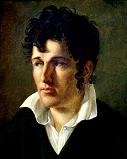
On Apr. 2, 1801 after traveling to the U.S. in 1791, incl. the Deep South, Saint-Malo-born French Romantic movement founder Francois-Rene, Vicomte de Chateaubriand (1768-1848) pub. his first novel Atala, ou Les Amours de Deux Sauvages dans le Desert, filled with exotic adventures by Native Ams. in the Deep South incl. Miss., La., and Fla., which becomes a hit. He follows with Rene (1802), about young Frenchman Rene, who seeks refuge with the Natchez people of La., becoming another big hit with an impact comparable to Goethe's "The Sorrows of Young Werther" (1774). In 1826 he pub. Les Natchez, written in 1793-9. In 1826 he pub. The Adventures of the Last Abencerrage, based on his 1806 visit to the Middle East and Spain.

In 1802 Paris-born French brain babe Madame Germaine de Stael (Staël) (Anna Louise Germaine de Staël-Holstein) (1766-1817) (opponent of Napoleon) pub. Delphine, a semi-autobio. novel that introduces the femme incomprise to French lit. In 1807 she pub. Corinne, ou L'Italie; first to use the word "salon" instead of bureau d'esprit; "Tout comprendre rend très-indulgent" ("To know all is to forgive all") (Book 18, Ch. 5).

In May 1826 Loches-born Romantic poet-playwright-novelist ("Founder of the French Historical Novel") Alfred Victor, Comte de Vigny (1797-1863) pub. Cinq-Mars (2 vols.), a historical novel based on the life of Louis XIII's favorite Henri Coiffier de Ruze, Marquis of Cinq-Mars, who led the last conspiracy against Cardinal Richelieu, becoming the first important French historical novel, and a big hit; too bad, his friend Victor Hugo goes liberal while he retains his royalist sympathies, causing them to break up, after which Hugo passes him in fame. In 1832 he pub. Stello, a philosophical dialogue between Dr. Noir (the Black Doctor) and Stello that examines the relation of poetry to society and concludes that the poet is doomed to be regarded with suspicion in every social order and must "separate poetic life from political life".

In 1827 Grenoble-born realist Stendhal (Marie-Henri Beyle) (1783-1842), known for dedicating his works to "the Happy Few" pub. his first novel Armance, about impotent brilliant student Octave de Malivert, who romances Armance Zohiloff, marries her, then splits to fight in Greece, dying of sorrow. In 1830 he pub. Le Rouge et le Noir: Chronique du XIX Siecle (The Red and the Black: A Chronicle of the 19th Century); title refers to the tension between the clerical and secular interests of the protagonist; brilliant handsome studly Napoleon-worshiping seminary student Julien Sorel rises from his peasant birth in French Restoration society by adopting their code of hypocrisy, until he flies too high and attempts to murder jealous high-born ex-lover Madame de Renal for high-born new lover Mathilde de la Mole, then purposely blows his trial with a speech blaming the class society and threatening a new French Rev.; "He was born in the wrong time and place. He had a noble soul"; "I obeyed conventions I had no respect for. I tried to kill the only woman who will mourn my death." In 1839 he pub. The Charterhouse of Parma (La Chartreuse de Parme), about young Italian nobleman Fabrice del Dongo from his birth in 1798 to his death, incl. his upbringing in a castle on Lake Como, his attempt to join Napoleon's army in Mar. 1815 (the Hundred Days), and his witnessing of the June 18, 1815 Battle of Waterloo.

In 1830 Tours-born Honore (Honoré) de Balzac (1799-1850), known for drinking up to 50 cups of coffee a day for inspiration begins La Comedie (Comédie) Humaine, a plan to write approx. 40 novels with a common theme, pioneering realism, ending up with 91 finished works incl. novels, stories, and essays, and 46 unfinished works.

In 1830 Besancon-born Victor Marie Hugo (1802-85), known for writing in the nude so he can't be tempted to leave home bursts on the French scene with a spectacular output of novels, plays and poetry in his own anti-classical Romantic style, which makes him the #1 guy for three gens. of Frogs. On Jan. 14, 1831 he pub. The Hunchback of Notre-Dame (Notre Dame de Paris), about Paris in the time of Louis XI starting on Epiphany (Jan. 6), 1482, the Feast of Fools; hunchback bellringer Quasimodo, Gypsy babe Emeralda, Capt. Phoebus, Pierre Gringoir, Archdeacon Claude Frollo; the criminal Truands and their Court of Miracles led by King Clopin Trouillefou; "Maitre Jacques Coppenole"; "A Tear for a Drop of Water"; "His cathedral was enough for him. It was peopled with marble figures of kings, saints, and bishops who at least did not laugh in his face and looked at him with only tranquility and benevolence. The other statues, those of monsters and demons, had no hatred for him - he resembled them too closely for that. It was rather the rest of mankind that they jeered at"; "Great edifices, like great mountains, are the work of the ages"; the popularity of the book spurs rebuilding efforts, with Jean-Baptiste-Antoine Lassus and Eugene Viollet-le-Duc selected as architects, who design and build the 300-ft. spire in 1859, which burns in Apr. 2019. In 1862 he pub. Les Miserables (Misérables) (10 vols., 513K words) simultaneously in six languages, becoming a giant internat. hit, the 1st Paris ed. selling out in 24 hours, becoming the gospel for the poor and oppressed of the world, becoming a hit for both armies in the U.S. Civil War; set in 1815-32, culminating in the 1832 June Paris Uprising; in five parts: "Fantine", "Cosette", "Marius", "Saint Denis", "Jean Valjean"; Inspector Javert persecutes of petty thief Jean Valjean (Vlajean) (Voila Jean) even after he spends 19 years in the galleys for breaking the window of baker Maubert Isabeau and stealing a loaf of bread to feed his starving sister and her seven children in 1795 (5 years for burglary, plus 14 for four escape attempts, prisoner #24,601), and is given a new chance by Monseigneur Bienvenu, Bishop of D (based on Monsignore Miolles of Digne), who helps him become a millionaire jet glass manufacturer, benefactor of the poor, and mayor of M sur M under the alias Monsieur Madeleine, until he is exposed by Javert and flees to Paris, where he fulfills a promise to dying mother Fantine and brings up little Cosette (based on Adele Foucher AKA Madame Hugo), who grows up and is courted by revolutionary Marius Pontmercy (based on himself), whom he rescues from a rev. barricade, dying reconciled at last, boo hoo; contains a 3-page 823-word sentence with 93 commas, 51 semicolons, and 4 dashes; "So long as there shall exist, by reason of law and custom, a social condemnation, which, in the face of civilization, artificially creates Hells on Earth, and complicates a destiny that is divine, with human fatality; so long as the three problems of the age - the degradation of man by poverty, the ruin of woman by starvation, and the dwarfing of childhood by physical and spiritual night - are not solved; so long as, in certain regions, social asphyxia shall be possible; in other words, and from a yet more extended point of view, so long as ignorance and misery remain on Earth, books like this cannot be useless" (preface); "What evil good can be"; "The masterwork of fiction of this century" (George Meredith); "Lord of human tears" (Tennyson).
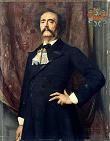
In 1831 Saint-Sauveur-le-Vicomte, Normandy-born decadent realist novelist Jules-Amedee Barbey d'Aurevilly (Jules-Amédée Barbey d'Aurevilly) (1808-89), known for his dandyism pub. his first novel Le Cachet d'Onyx. In 1855 he pub. The Bewitched (L'Ensorcelée), about a royalist rising among the Norman peasants against the French First Repub. In 1874 he pub. The She-Devils (Les Diaboliques) (short stories), about women who commit a crime to relieve the boredom of their bourgeois lives in the French Second Repub. In 1883 he pub. his last novel What Never Dies (Ce qui ne Meurt Pas). "The most beautiful destiny: to have genius and be obscure."

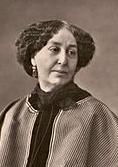
In 1831 liberated Paris-born lover George Sand (Amandine or Amantine Lucile Aurore, Baroness Dupine-Dudevant) (1804-76) (AKA Madame Dudevant), daughter of French officer Maurice Dupin, grandson of Marshal Saxe (1696-1750), illegitimate son of King Augustus II of Poland, known for wearing men's clothes and smoking cigars pub. her first novel Rose et Blanche, with Jules Sandeau (1811-83), who uses the name "Jules Sand", causing her to adopt the pen name George Sand. In 1832 she pub. Indiana (first solo novel, under her real name Amantine Aurore), along with Valentine. In 1833 she pub. Lelia, which shocks Victorian society by advocating the same standard of morality for both sexes; "To be lover, courtesan, and mother... these are three conditions of a woman's fate which no woman escapes, whether she sells herself in a market of prostitution or by a marriage contract"; "I remember the burning nights I passed against a man's flanks in close embrace with him... One day I felt so worn-out with loving that I stopped suddenly. When I saw how easily this bond was broken, I was astonished at having believed in its eternal quality." In 1833-5 she hooks up with Alfred de Musset (1810-57), followed in 1837-47 by Frederic Chopin (1810-49). In 1837 she pub. Mauprat, a retelling of "Beauty and the Beast"; nobleman Bernard Mauprat is raised by feudal kinsmen who turn him into an "enfant sauvage", after which he helps his cousin Edmee escape and falls for her, threatening rape to get her to consent to marriage, ending in a "Red and Black" type trial. In 1842-3 she pub. Consuelo; her masterpiece?; her novels begin to dazzle?; modeled after her friend Pauline Viardot, wife of Louis Viardot. In 1849 she pub. Little Fadette (La Petite Fadette) (Fanchon the Cricket); written after her return from Paris to the countryside of Chateauroux; English trans. pub. in 1900; identical twins Landry and Sylvinet are inseparable until Landry is forced to go to work on a neighboring farm, and falls for Fadette. In 1853 she pub. Les Maitres Sonneurs. In 1859 she pub. She and He (Elle et Lui); her 1833-5 love affair with Alfred de Musset; Jean de la Roche; Narcisse; L'Homme de Neige. In 1860 she pub. La Ville Noire; Marquis de Villemer. In 1861 she pub. Le Marquis de Villemer. In 1863 she pub. Mademoiselle La Quintinie. In 1864 she pub. Laura, Voyage dans le Cristal. In 1866 she pub. The Japanese Lily (Le Lis du Japon). In 1868 she pub. Mademoiselle Merquem. In 1873 she pub. A Grandmother's Tales (2 vols.) (1873, 1876).

In 1833 Paris-born poet-dramatist-novelist Alfred Louis Charles de Musset (Musset-Pathay) (1810-57) anon. pub. his first novel Gamiani, or Two Nights of Excess, a lesbian erotic novel modeled on his lover (1833-5) George Sand, about horny young stud Alcide, who peeps on Countess Gamiani and her young lover Fanny in bed, then joins them, doing it then sharing dirty stories; the most important work of erotic fiction of the cent., showing girls having fun with men and other girls - don't musset up? In 1836 he pub. The Confession of a Child of the Century (La Confession d'un Enfant du Siècle), an autobio. novel about his 1833-5 love affair with George Sand, filmed in 1999 as "Children of the Century" and in 2012 as "Confession of a Child of the Century". In 1842 he pub. Story of a White Blackbird (Histoire d'un Merle Blanc).


In 1835 Tarbes-born Romantic novelist-poet-dramatist-critic Theophile Gautier (Pierre Jules Théophile Gautier) (1811-72) pub. his first novel Mademoiselle de Maupin, based on the true story an opera star who disguised herself as a man and was a first-rate swordsmen, setting fire to a convent for the love of another woman before retiring to a convent and dying in her thirties; Madelaine de Maupin disguises herself as a man named Theodore, causing both a man, d'Albert, and his mistress Rosette to fall in love with her; "Everything useful is ugly". In 1858 he pub. Le Roman de La Momie. In 1861 he pub. Le Capitaine Fracasse (2 vols.) (1861, 1863), about a brave chivalrous soldier during the reign of Louis XIII. A writer of cool travel books, he becomes big man in the Parisian lit. set for 40 years, becoming a forerunner of Modernism, Symbolism, Decadence etc. In 1882 he posth. pub. One of Cleopatra's Nights and Other Fantastic Romances (short stories), tr. by Lafcadio Hearn.

In 1844 Villers-Cotterets, Aisne-born Alexandre Dumas pere (Dumas Davy de la Pailleterie) (1802-70), son of Saint-Domingue, Haiti-born mulatto French gen. Thomas Alexandre de la Pailleterie (1762-1806), a republican not well liked by Napoleon, causing his family to be left in poor financial condition on his death pub. The Three Musketeers (Les Trois Mousquetaires); first pub. starting in Mar. as a serial in Le Siecle (Siècle); three 17th cent. French swordsmen from Gascony incl. ambidextrous Athos, big burly Porthos, and Aramis defend the honor of Louis XIII's wife Anne of Austria (daughter of Philip III of Spain) against scheming Cardinal Richelieu; D'Artagnan makes four. In 1844-5 he pub. The Count of Monte Cristo (Le Comte de Monte Cristo); in 1815 Edmond Dantes (alias Sinbad the Sailor, Abbe Busoni, and Lord Wilmore) is falsely imprisoned at age 19 and kept in the dungeon of the horrible Chateau d'If, meeting learned Abbe Faria, who turns him into a well-read dude and reveals the hiding place of the buried treasure of the Spada family of Italy (guess?); after 14 years he escapes, gets the treasure, buys the island of Monte Cristo, becomes its count, and spends the rest of his life getting even with his enemies Gaspard Caderousse, Monsieur de Villefort et al. while performing acts of kindness and charity for his friends Monsieur Morrel, his daughter Julie Morrel Herbault, his son Maxmilien Morrel et al., after which he sails away with his babe and former slave Haydee (Haydée); "There is neither happiness nor unhappiness in this world, there is only the comparison of one state with another. Only a man who has felt ultimate despair is capable of feeling ultimate bliss." Dumas pere on Dec. 5, 1870 in Puys (near Dieppe) soon after having a scandalous affair with an Am. circus girl after pub. 1.2K vols. under his name using a fiction factory with hired writers which he supervised to create his plot lines and incidents, although he writes the final mss.; dies in poverty despite a large income because of his extravagant lifestyle at his Monte-Cristo estate, money-losing theater, and horde of parasites incl. 40 mistresses; in 1995 his lost novel The Last Cavalier, about Count Hector de Sainte-Hermine and how he shot British Adm. Horatio Nelson at Trafalgar is found in the archives of the Nat. Library in Paris: "My father was a mulatto, my grandfather was a Negro, and my great-grandfather a monkey. You see, Sir, my family starts where yours ends." - the original French Mike Tyson?


In Sept. 1844 Norman-born Parisian courtesan Marie Duplessis (Alphonsine Rose Plessis) (1824-47) becomes the mistress of novelist Alexandre Dumas fils (1824-95) (illegitimate son of Alexandre Dumas pere), who hooks up with her for almost a year until next Aug., then gets to work immortalizing her as Marguerite in "La Dame aux Camelias" (1848) (with himself as Armand), while she hooks up with Franz Liszt (1811-86), then dies of TB at age 23. In 1848 he pub. La Dame aux Camelias (The Lady of the Camellias), about Armand Duval (narrator) and his babe Marguerite Gautier, becoming the basis of Verdi's 1853 opera "La Traviata".

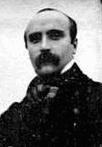
In Apr. 1857 Rouen-born realist Gustave Flaubert (1821-80) pub. his first novel Madame Bovary, the first French realist novel, pub. in book form after appearing in serial form in La Revue de Paris (ed. Leon Laurent-Pichat and Maxime Du Camp) in Oct. 1-15, 1856, and the govt. attempting to stop its pub. for obscenity in Jan.-Feb., but losing in court on Feb. 7; took 13 years to write as he search for "le mot juste" (the precise word); every passage is from the point of view of a character?; Emma and her boring hubby Charles, and her secret lovers Rodolphe and Leon, who help her escape her empty provincial life while luring her into living beyond her means; after bankrupting Charles she commits suicide and is buried in a coffin lined with oak, mahogany, and lead; "Language is a cracked kettle on which we beat out tunes for bears to dance to, while all the time we long to move the stars to pity."

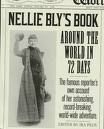
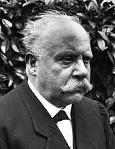
In 1863 after giving up law training and a job as stock broker to write "voyages extraordinares", Nantes-born Jules Gabriel Verne (1828-1905) pub. his first novel Five Weeks in a Balloon; Or, Journeys and Discoveries in Africa by Three Englishmen - whites see darkest Africa from the air, wishing the gulf were permanent and it remains a nature preserve? In 1864 he pub. Journey to the Center of the Earth; German Prof. Otto Lidenbrock and his nephew Axel discover a 16th cent. document by Snorri Sturlsson describing a journey into volcanic conduits in the crater of the Snaefellsjokull (Snæfellsjökull) Volcano in Iceland, following the directions and emerging in Stromboli Island through a geyser after discovering Lidenbrock Sea 87 mi. down and witnessing a battle between Jurassic sea monsters, venturing into the island and discovering living mastodons and primitive hominids - a lot of Southerners would like to go with him? In 1865 he pub. From the Earth to the Moon; three scientists and a journalist get shot from a cannon in Cape Canaveral, Fla. In 1870 he pub. 20,000 Leagues Under the Sea: An Underwater Tour of the World; the linear distance traveled is 69,060 mi.; narrated by Prof. Pierre Aronnax; Capt. Nemo (Lat. "No One") and the Nautilus battle a giant squid; in the sequel The Mysterious Island (1874) (named after Abe Lincoln) he is revealed to really be Prince Dakkar, and is buried in his tub. On Jan. 30, 1873 he pub. Around the World in Eighty Days; a whist game at the Reform Club of London on Oct. 2, 1872 leads to a £20K wager, followed by a trip by airgonaut Phileas Fogg and his French valet Passepartout and a Gladstone bag filled with money from London to Suez, India (Bombay, Calcutta) (during which they rescue Aouda from the funeral pyre of her dead hubby), Hong Kong, Yokohama, San Francisco, New York City, and back to London, all while being chased by the London bobby Fix, who believes they robbed the Bank of England for £55K, and arrests them after they arrive in London 5 min. late, after which they discover that they gained a day, and get out just in time to win; "The unforseen does not exist." In 1879 he pub. The Begum's 500 Millions (Fortune); French physician Dr. Sarrasin inherits big franks from a French soldier of fortune who married a rich Indian widow, and used it to found a model city based on public health; militarist German supremacist scientist Prof. Schultze also inherits a share, using it to found his own city, based on producing secret veapons which will be used to destroy Sarrasin's city; don't ask me how, but they manage to get the U.S. to cede a large section of the Pacific Northwest for their cities. In 1882 he pub. School for Crusoes (Godfrey Morgan: A Californian Mystery), based on Daniel Defoe's "Robinson Crusoe" (1719); Godfrey Morgan and his teacher Prof. T. Artelett leave San Francisco, Calif. on a round-the-world ocean voyage, and end up as castaways on an uninhabited island in the Pacific, where they later encounter African slave Carefinotu, brought by cannibals. In 1886 he pub. Robur the Conqueror (The Clipper of the Clouds); based on "the striking experiments of Capt. Krebs and Capt. Renard". The Geraldo of the 19th century? On Nov. 14, 1889 good-looking New York World daredevil reporter Nellie Bly (1864-1922), who last year spent 10 days in the Blackwell's Island insane asylum in New York City pretending to be insane to expose them takes Jules Verne up on his novel thesis and sets out on a 24,899-mi. round-the-world trip from Hoboken, N.J., arriving back in New York next Jan. 25 in a record 72 days, 6 hours, 11 min. 14 sec.; she retires from journalism in 1894 after marrying millionaire manufacturer Robert Seaman (1822-1904), then returns to reporting after employee embezzlement ruins the co. In 1896 he pub. Facing (For) the Flag; France is threatened by the Fulgurator super-weapon invented by mad scientist (the first in sci-fi?) Thomas Roch; Francois Eugene Turpin (1848-1927), inventor of Melinite sues Verne, claiming that Roch is really him; Verne is successfully defended by future French pres.-PM Raymond Poincare. In 1900 he pub. The Castaways of the Flag (Seconde Patrie) (Second Fatherland) (2 vols.); sequel to "The Swiss Family Robinson" (1812) by Johann David Wyss. In 1904 he pub. Master of the World, a "black novel" filled with the fear of the rise of tyrants incl. villain Robur.

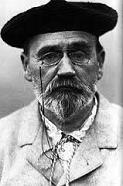
In 1864 Paris-born Emile Edouard (Émile Édouard) Charles Antoine Zola (1840-1902), founder of the lit. school of naturalism pub. his first novel Contes a Ninon, followed by La Confession de Claude (1865), Les Mysteres de Marseille (1867), about lovers Philippe Cayol and Blanche de Cazalis, niece of millionaire Marseilles politician De Cazalis, Therese Raquin (1867), about a French woman who is forced to marry her first cousin Camille by her overbearing aunt Madame Raquin, and has an affair with his friend Laurent. In 1871 he begins pub. Les Rougon-Macquart: Natural and Social History of a Family Under the Second Empire, a cycle of 20 novels (1871-93) that follow the lives of members of the two titular branches of a fictional family during the Second French Empire (1852-70), becoming the #1 work of the French naturalism lit. movement, incl. La Fortune des Rougon (1871), Nana (1880), about the rise of streewalking ho Nana Coupeau to high-class cocotte during the last three years of the Second French Empire, Germinal (1885) (his masterpiece?), about a coalminers' strike in N France in the 1860s, featuring miner Etienne Lantier, and Le Docteur Pascal (1893) (last), about a physician from Plassans who believes in heredity as dominant over environment, classifying the 30 descendants of his grandmother Adelaide Fouque (Tante Dide).

In 1876 Paris-born J.K. (Joris-Karl) (Charles-Marie-Georges) Huysmans (1848-1907) Marthe, Histoire d'une Fille (Martha, Story of a Girl) (first novel), about a young ho; its naturalism makes a fan of Emile Zola. On Feb. 26, 1879 he pub. Les Soeurs Vatard (The Vatard Sisters), dedicated to Emile Zola, about sisters Celine and Desiree, who work in a book-binding factory in Paris hook up with artist Cyprien Tibaille and loser Auguste. In 1884 he pub. A Rebours (Against Nature), a decadent novel about about homosexual aesthete Jean des Esseintes, turning on Oscar Wilde et al. to you know what? In 1891 he pub. La-Bas (Là-bas) (Down There), about novelist Durtal, who turns to the study of the Middle Ages and 15th cent. child molester Gilles de Rais, using his Paris contact Dr. Johannes to find that Satanism is alive and well; Durtal becomes the protagonist of all his subsequent novels incl. "En Route" (1895), "La Cathedrale" (1896), and "L'Oblat" (1903), which explore his conversion to Roman Catholicism and initiation as a Benedictine oblate, making him successful enough to retire from the French civil service after 32 years.
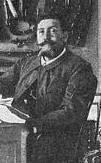
In 1879 Escrennes, Loiret-born adventure novelist Louis Henri Boussenard (1847-1910) pub. his first novel À Travers Australie: Les Dix Millions de l'Opossum Rouge, followed by Le Tour du Monde d'un Gamin de Paris (1880), Les Robinsons de la Guyane (1882), Aventures Périlleuses de Trois Français au Pays des Diamants (1884), set in a mysterious cavern beneath Victoria Falls, and The Crusoes of Guyana; or, The White Tiger (1885). In 1888 he pub. the sci-fi novels Les Secrets de Monsieur Synthèse, followed by Dix Mille Ans dans un Bloc de Glace (1890). In 1898 he pub. L'île en Feu, about Cuba's struggle for independence. In 1901 he pub. Les Étrangleurs du Bengale. In 1901 he pub. his biggest hit Le Capitaine Casse-Cou, set at the time of the Boer War. In 1911 after he becomes more popular in E Europe than France, his collected works (40 vols.) are pub. in Russia.
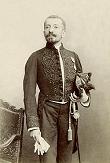
In 1879 Rochefort-born Turkophile French naval officer ("Father of Modern Exotic Fiction") Pierre Loti (Louis Marie-Julien Viaud) (1850-1923) (alias comes from the lotus, which allegedly blushes unseen, referring to his shyness; either that or from roti, a red flower in Tahiti after he gets a sunburn and mispronounces the r) anon. pub. his semi-autobio. first novel Aziyade (Aziyadé), based on his 3-mo. stay as a French naval officer in Greece and Istanbul in late 1876, about his love affair with an 18-y.-o. Circassian harem girl and their love triangle with Spanish man servant Samuel, causing many to suspect that he's gay. In 1880 he anon. pub. The Marriage of Loti (Rarahu) (Le Mariage de Loti), based on his experiences in Papeete, Tahiti in 1872, where he went native and hooked up with hot babe Rarahu (a composite); his first big hit; inspires the 1883 opera "Lakme" by Leo Delibes. In 1881 he pub. The Romance of a Spahi (Le Roman d'un Spahi), about a French cavalry soldier in Senegambia (Senegal). In 1883 he pub. My Brother Yves (Mon Frère Yves); his biggest hit?; a semi-autobio. novel about the 1870s-1880s friendship between a French naval officer and hard-drinking Breton sailor Yves Kermadec (really Pierre le Cor). In 1886 he pub. An Iceland Fisherman (Pecheur d'Islande) (his biggest hit?), about the sad life of Breton fishermae who fish in Iceland each summer. In 1887 he pub. Madame Chrysantheme; big hit (25 eds. in first five years); short-term marriages of Frenchmen with Japanese rashamen (concubines); basis of Andre Messager's 1893 opera "Madame Chrystantheme", and Giacomo Puccini's 1904 opera "Madama Butterfly"; "I shall choose a little yellow-skinned woman with black hair and cat's eyes. She must be pretty. Not much bigger than a doll." In 1897 he pub. Ramuntcho, about Basque contraband runners, becoming another big hit; turned into an opera in Paris in 1910, with music by Gabriel Pierne; filmed 4x in France.

In 1883 after pub. his debut hit short story masterpiece Ball of Fat (Boule de Suif) in 1880 (first of 300 short stories), Tourville-sur-Arques-born naturalist writer Henri Rene Albert Guy de Maupassant (1850-93) (Gustave Flaubert's prize student) pub. his first novel A Woman's Life (Un Vie), which becomes a bestseller (25K copies in the first year). In 1885 he pub. Bel Ami, or The History of a Scoundrel, about corrupt journalist Georges Duroy's rise to power in Paris, which goes through 37 printings in 4 mo.; English trans. pub. in 1903. In 1888 he pub. Pierre et Jean (his masterpiece?), a psycho-realist novel about Pierre (physician) and Jean (atty.), the sons of retired jeweller Gerome Roland and his wife Louise, who live in Le Havre, after which family friend Leon Marechal leaves his inheritance to Jean, causing Pierre to get jealous and question his legitimacy. He follows with Strong as Death (Fort comme la Mort) (1889), and Our Sister (Notre Coeur) (1890).
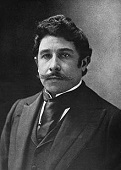

In 1886 Paris-born French novelist Paul Adam (1862-1920) and Athens-born Greek poet (in French) Jean Moreas (Moréas) (Ioannis A. Papadiamantopoulos) (1856-1910) pub. Les Demoiselles Goubert, which marks the transition between Naturalism and Symbolism in French lit.

In 1891 Paris-born Andre (André) Paul Guillaume Gide (1869-1951) pub. his first novel The Notebooks of Andre Walter (Les Cahiers d'Andre Walter). In 1893 he pub. The Voyage of Urien (Le Voyage d'Urien); pun on "voyage du rien" (voyage into nothing). In 1895 he pub. Marshlands (Paludes), a satire of the young Symbolist writers who frequent Mallarme's salon. In 1896 he pub. The Hadj: The Treatise of the False Prophet, about a prince who dies, forcing the narrator to become a prophet and lead his men home from a journey. In 1899 he pub. Prometheus Ill-Bound (Le Promethee mal Enchaine), a satire in which Prometheus leaves his mountain and chats with other mythical figures and the waiter in a Paris cafe about the pesky eagle who was eating his liver. In 1902 he pub. The Immoralist (L'Immoraliste); TB-suffering Frenchman Marcel leaves his wife Marceline to chase young Arab boys in Tunis. In 1907 he pub. The Return of the Prodigal Son (Le Retour de l'Enfant Prodigue), a continuation of Luke ch. 15. In 1909 he pub. Strait Is the Gate (La Porte Etroite); title based on Matt. 7:13-14; semi-autobio. novel about 10-y.-o. Jerome and his love for his 10-y.-o. cousin Alissa in 1880s Normandy. In 1911 he pub. Isabelle, about a young man who visits a remote country home and falls in love with a portrait of their absent daughter and unravels the mystery of her absence. In 1914 he pub. The Vatican Cellars (Les Caves du Vatican), about Lafcadio Wluiki, who "wanders through numerous capitals of Europe, and involves, saints, adventurers, and pickpockets". In 1919 he pub. The Pastoral Symphony (La Symphonie Pastorale); title comes from Beethoven's Six "Pastoral" Symphony; a pastor rescues blind orphan Gertrude from poverty and engages in illicit love; filmed in 1946. In 1925 he pub. The Counterfeiters (Les Faux-Monnayeurs), about young gay writer Edouard and his lover Bernard. In 1929 he pub. The School for Wives (L'Ecole des Femmes), first in a trilogy incl. Robert (1930), and Genevieve (1936). In 1946 he pub. Theseus (Thésée ), about the aging hero of Athens narrating his life story. He receives the 1947 Nobel Lit. Prize "for his comprehensive and artistically significant writings, in which human problems and conditions have been presented with a fearless love of truth and keen psychological insight."

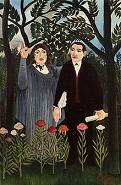
In 1900 Rome, Italy-born poet-playwright-art critic and erotic novelist Guillaume Apollinaire (Wilhelm Albert Wlodzimierz Apolinary Kostrowicki) (1880-1918) (d. 1918), son of an Italian army officer father and aristocratic Polish mother, a forerunner of Cubism and Surrealism and coiner of the term "Cubism" (1911) to describe the works of Pablo Picasso and Georges Braque, the term "Orphism" (1912) to describe the works of Frantisek Kupka, and the term "Surrealism" (1917) to describe the works of Eric Satie, a fan of Calligrammes (poems with a physical structure on the page) writes his first novel (unpub.) Mirely, or The Cheap Little Hole (Mirely ou le Petit Trou pas Cher) (porno), and What to Do? In 1907 he pub. (Que Faire?) (unpub.). The 11 Thousand Rods (Penises) and the Loves of Hospodar (Les Onze Mille Verges ou Les Amours d'un Hospodar). In 1909 he pub. The Enchanter Rotting (L'Enchanteur Pourrissant). In 1910 he pub. The Heretic & Co. (L'Hérésiarque et Cie) (short stories). In 1911 he pub. The Adventures of Young Don Juan (Les Exploits d'un Jeune Don Juan). In 1913 he pub. his hit punctuation-free poems Alcools (Alcohol), incl. "Zone" ("the great poem of early Modernism" - Martin Sorrell). In 1914 he pub. The Rome of the Borgias (La Rome des Borgia), and The Fall of Babylon (La Fin de Babylone). In 1915 he pub. The Three Don Juans (Les Trois Don Juan). In 1916 he pub. The Murdered Poet (Le Poète Assassiné), his own story in disguise. Too bad, he was wounded in WWII in 1916, and died of the Spanish flu in 1918. In 1928 he posth. pub. The Pins (Les Epingles) (short stories).

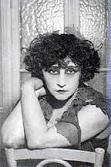
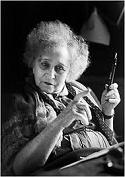
In 1900 with help from her older famous writer hubby Willy, Yonne-born Colette (Sidonie-Gabrielle Colette) (1873-1954) pub. her first novel Claudine a l'Ecole (Claudine at School), followed by "Claudine a Paris" (1901), "Claudine en Menage" (Claudine Married) (1902), and "Claudine s'en va"(Claudine is Leaving) (1903). On Jan. 3, 1907 the pantomime play Reve D'Egypte debuts at the Moulin Rouge in Paris, and open lezzie lovers Colette (1873-1954) and Mathilde de Morny, Marquise de Belbeuf (1862-1944) (AKA Missy) (playing a man) make out so passionately on stage that it outrages not only the Marquise's husband but the audience, causing them to riot and the play to be banned, forcing the two to have to go in the closet while Colette has a straight affair with Italian writer Gabriele D'Annunzio - shouldn't Jack be in jail? In 1908 she pub. Tendrils of Vines (Les Vrilles de la Vigne). In 1910 she pub. La Vagabonde, about Renee Nere, who gets divorced and begins dancing in music halls. 'I shall have everything... and I shall lean over the edge of a white terrace smothered with the roses of my gardens and shall see the lords of the earth, the wanderers, pass by!'" In 1919 she pub. Mitsou; the 24-y.-o. star of a show in Montmartre hides two lts. in her garderobe to help her friend Petite Chose; filmed in 1956. In 1920 she pub. Cheri, about Fred Peloux, who separates from his older lover Lea de Lonval. In 1922 she pub. La Maison de Claudine (Claudine's House). In 1923 she pub. The Ripening Seed (Green Wheat) (Le Bie en herbe), about the summer romance of Phil and Vinca. In 1926 she pub. The Last of Cheri (La Fin de Cheri). In 1928 she pub. Break of Day (La Naissance du jour); filmed in 1980. In 1932 she pub. Le Pur et L'Impur (The Pure and the Impure). In 1933 she pub. La Chatte (The Cat); a love triangle between Camille Malmer, her hubby Alain Amparat, and his Chartreux cat Saha. In 1934 she pub. Duo, about a married couple who vacation in S France and deal with the wife's unfaithfulness. In 1944 she pub. Gigi, about a young Parisian girl being groomed to be a courtesan by her grandmother, whose wealthy cultured patron Gaston falls in love with and marries; filmed in 1949 starring Gaby Morlay, and in 1960 starring Leslie Caron; after Colette personally picks her, Audrey Hepburn makes her Broadway stage debut in the role in 1951.
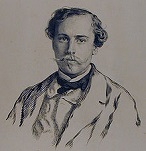

In Dec. 1903 the Prix Goncourt, an annual prize given to "the best and most imaginative prose work of the year" in France begins to be awarded in honor of Jules Alfred Huot de Goncourt (1830-70) after a bequest by his brother Edmond de Goncourt (1822-96); the jury meets at the Drouant Restaurant in Paris to make their decision, and never gives it knowingly to the same author twice, although they goof up in 1975, giving it to Emile Ajar, who turns out to be Romain Gary (1914-80), who already got it in 1956 - I'll take it and run with it?
In 1904 Clamecy, Nievre-born Romain Rolland (1866-1944) begins pub. his first novel Jean-Christophe (10 vols.) (1904-12), a roman fleuve about the corruption of France and Germany as seen through the eyes of German musical genius Jean-Christophe Kraft, who makes France his second home, winning him the 1915 Nobel Lit. Prize. In 1919 he pub. Colas Breugnon. In 1920 he pub. Clerambault (Clérambault): The Story of an Independent Spirit During the War; a father loses his son in WWI and decries militarism; also Pierre et Luce; lovers during WWI. In 1922 he begins. pub. the roman fleuve The Enchanted Soul (L'Ame Enchantee) (7 vols.) (1922-33); vol. 1 is "Annette et Sylvie".
In 1904 the annual Priz Femina lit. prize is established by 22 writers of La Vie Heureuse (later Femina) mag., with prizes decided by an all-female jury but not limited to women; the prize is announced on the first Wed. of Nov.; the first winner is Myrian Harry for "La Conquete de Jerusalem"; in 1920 the Femina-Vie Hereuse Prize is established in Britain by the Hachette Group for English writers (until 1940); in 1920 the Northcliffe Prize is established by Lady Northcliffe, wife of Alfred Harmsworth for French writers (until 1940); in 1985 the Prix Femina Étranger award is established for non-French writers, with the first winner John Maxwell Coetzee for "Michael K, sa Vie, son Temps" (The Life and Times of Michael K.); in 2011 the Prix Femina Essay award is established, with first winner Elivre de Brissac for "Ô dix-neuvième!"
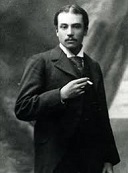
In 1908 Vichy-born French poet-writer and rich dandy Valery Larbaud (1881-1957) (owner of the Vichy Saint-Yorre mineral water springs, left to him by his father at age 8) pub. his first poetry book Poemes (Poèmes) par un riche amateur (Poems by a Rich Amateur), which makes a fan of Octave Mirbeau. In 1913 he pub. his first novel Fermina Marquez (Márquez); hot young Fermina Marquez arrives from Colombia at Saint Augustine's Roman Catholic boys school near Paris along with her younger brother Little Marquez, turning the student body on sexually; becomes a minor classic of French lit. In 1913 he pub. the novel Diary of A.O. Barnabooth. He goes on to make friends with Jean Aubry, Leon-Paul Fargue, Andre Gide, and Charles-Louis Philippe, and translate and popularize Samuel Butler, Samuel Taylor Coleridge, James Joyce, and Walt Whitman before becoming paralyzed in 1935 and having to sell his property.

In 1913 Bordeaux-born poet-novelist-essayist (Roman Catholic) Francois Charles Mauriac (1885-1970) (who looks like a skinny French Hitler?) pub. his first novel Young Man in Chains (L'Enfant charge de chaines). In 1922 he pub. The Kiss to the Leper (Le Baiser au Lépreux); the world is so bad to a Roman Catholic? In 1925 he pub. The Desert of Love (Le Desert de l'amour). In 1927 he pub. Thérèse Desqueyroux, about a woman of Landes in SW France who is acquitted of trying to poison her husband Bernard with arsenic even though she's guilty because he testifies in her behalf, after which he punishes her his own way by imprisoning her in an isolated house in a pine forest in Argelouse. In 1933 he pub. The Frontenac Mystery (Le Mystere Frontenac). In 1952 he receives the Nobel Lit. Prize.

In Nov. 1913 boyish-looking Valentin Louis George Eugene Marcel Proust (1871-1922) pub. Du Cote (Coté) de Chez Swann (Swann's Way), about the doomed obsession of Robert Swann with Odette de Crecy and their daughter Gilberte, vol. 1 of his roman-fleuve A la Recherche du Temps Perdu (Remembrance of Things Past) (In Search of Lost Time) (7 vols.) (1913-27) (1.5M words); greatest modernist novel?; written while summering at a seaside resort in Normandy as an invalid in 1907-14 who has had asthma since childhood, turning him into a chronic invalid who works only in bed in a soundproof room while writing a giant novel about the mental life of a high society man, viz. himself; uses the mystical concepts of time of his wife's relative Henri Bergson; 1st-person narrator Marcel grew up in nostalgic Combray (Illiers-Combray) in NC France; vol. 1 is self-pub. and nobody buys it, but vol. 2 is a hit, causing him to pump up the series to 7 vols. and 3K pages, with five locales, six drawing rooms, and 7-10 major love affairs, ending with himself, after which the series comes full circle and vol. 1 turns out to have virtually all the important chars. and themes all along; "I feel that there is much to be said for the Celtic belief that the souls of those whom we have lost are held captive in some inferior being, in an animal, in a plant, in some inanimate object, and so effectively lost to us until the day (which to many never comes) when we happen to pass by the tree or to obtain possession of the object which forms their prison"; "the little scallop-shell of pastry, so richly sensual under its severe, religious folds [a madeleine]" - and like Auntie Mame says, the boxed set makes a good gift?
On Aug. 4, 1914 - Nov. 11, 1918 the horrific World War I causes 15M deaths and 39M military casualties, and destroys the Old Order of white formerly Christian Europe.

In 1919 Maisons-Lafitte-born bi playwright-filmmaker-writer (opium addict) Jean Maurice Eugene Clement (Eugène Clément) Cocteau (1889-1963) pub. his first novel The Potomac (Le Potomak). In 1923 he pub. Thomas the Imposter (Thomas l'Imposteur), about 16-y.-o. Guillaume Thomas de Fontenoy, who masquerades as the nephew of popular Gen. de Fontenay and helps widowed Princess de Bormes evacuate wounded soldiers from the front and nurse them in her villa in Paris by forging passes; filmed in 1964. In 1928 he pub. The White Paper (Le Livre Blanc). In 1929 he pub. his biggest hit The Enfants Terribles (Les Enfants Terribles), about siblings Elisabeth and Paul, who isolate themselves from the world as they grow up in The Room where they play The Game (the one with the last word wins), until the stresses of adolescence and love affairs shatter their isolation; English trans pub. in 1930; filmed in 1950. In 1940 he pub. his last novel The End of the Potomac (La Fin du Potomak).

In 1922 Neuilly-sur-Seine-born Roger Martin du Gard (1881-1958) begins pub. the multi-vol. roman fleuve The Thibaults (Les Thibault) (8 vols.) (1922-40), a giant epic of a middle-class French Roman Catholic bourgeois family from 1904 to the end of WWI, incl. brothers Jacques and Antonine Thibault, and passionate artist Daniel de Fontanin, who try to live without belief in God, winning him the 1937 Nobel Lit. Prize; makes a fan of Andre Gide and Albert Camus; influences Evelyn Waugh's "Brideshead Revisited" (1945); "A work whose learned obtuseness is, so far as I know, unequaled in fiction." (Mary McCarthy)

In 1926 the Prix Renaudot lit. award, named after Theophraste (Théophraste Renaudot) Renaudot (1586-1653), creator of the French newspaper in 1631 is established as a complement to the Prix Goncourt; the first award goes to Armand Lunel for Niccolo Peccavi.


In 1929 Brussels, Belgium-born French novelist-essayist Marguerite Yourcenar (Marguerite Antoinette Jeanne Marie Ghislaine Cleenewerck de Crayencour) (1903-87), future lover (1937-79) of Kansas City, Mo. native lit. scholar Grace Frick (-1979) pub. her first novel Alexis. In 1951 she pub. the novel Memoirs of Hadrian (Mémoires d'Hadrien), his long letter to adoptive son Marcus Aurelius, which becomes her biggest hit. In 1980 she becomes the first female elected to the Academie Francaise.

In Oct. 1932 Courbevoie, Paris-born physician Louis-Ferdinand Celine (Louis Ferdinand Auguste Destouches) (1894-1961) (named after his grandmother) pub. his first novel (his masterpiece) Journey to the End of the Night (Voyage au Bout de la Nuit), which develops a new style using ellipsis, hyperbole, and vernacular that modernizes French lit.; autobio. novel about petit-bourgeois antihero Ferdinand Bardamu, who travels from the battlefields of WWI to French West Africa, the U.S., (where he works for Ford Motor Co.) and back to France, becoming a physician in the poor Paris suburb of La Garenne-Rancy, spouting endless nihilism, misanthrophy, pessimism, and cynical humor; "I cannot refrain from doubting that there exist any genuine realizations of our deepest character except war and illness, those two infinities of nightmare"; a hit, making him a star, and inspiring later Beatnik writers incl. Jack Kerouac, Kurt Vonnegut Jr., Joseph Heller, and William S. Burroughs; "The best book written in the last two thousand years" (Charles Bukowski). In 1936 he pub. Death on the Installment Plan (Mort a credit), Paris physician Ferdinand lets the poor get treatment on credit while he sinks into a morass of despair; makes a fan of Jean-Paul Sartre. Too bad, he begins pub. a stream of anti-Semitic pamphlets praising Hitler, getting him into trouble with the French govt. as WWII ends.

In 1932-46 Saint-Julien-Chapteuil, Haute-Loire-born French writer Jules Romains (Louis Henri Jean Farigoule) (1885-1972) pub. Les Hommes de Bonne Volonte (Volonté) (The Men of Good Will) (27 vols.) (2M words), written to illustrate his Unanimism (collective consciousness) technique.


In 1933 Le Havre-born Oulipo founder Raymond Queneau (1903-76) (whose portrait bears a striking resemblance to Hollywood actor Rock Hudson (1925-85)?) pub. his first novel The Bark Tree (Le Chiendent). In 1959 he pub. Zazie in the Metro (Zazie dans le Métro), his biggest hit, about pre-teenie Zazie, who stays in Paris with female impersonator Uncle Gabriel, then runs away to explore the city; explores the difference between colloquial and written French; filmed in 1960 by Louis Malle.

In 1936 Neuilly-sur-Seine, Paris-born erotic novelist-diarist (bi?) Anais (Anaïs) Nin (Angela Anais Juana Antolina Rosa Edelmira Nin y Culmell) (1903-77) (pr. ah-na-EES) (Cuban father, Cuban-French-Danish mother) pub. her first novel House of Incest, in which the author tries to escape from a selfish love where she can appreciate in the other only that which is similar to herself, "the woman's season in Hell". In 1939 she pub. Winter of Artifice, about her incestuous relationship with her father "The Double". In 1944 she pub. Under a Glass Bell (short stories); self-pub.; her masterpiece?; establishes her lit. rep. In 1959 she pub. Cities of the Interior five autobio. novels in one, incl. "Ladders to Fire", "Children of the Albatross", "The Four-Chambered Heart", "A Spy in the House of Love", "Seduction of the Minotaur (Solar Barque)". In 1966 she pub. Diary of Anais Nin (vol. 1 of 7); starts it age 11 and keeps it up for life, reaching 15K typewritten pages; vol. 1 covers 1931-4, when she lives in Louveciennes near Paris with banker Hugh Parker Guiler and hooks up with Henry Miller and June Miller and is psychoanalyzed by Otto Rank and Rene Allendy; makes her an erotic writing star, even though it is expurgated until 1986. In 1977 she posth. pub. Delta of Venus, 15 short stories written in the 1940s for a private collector of erotica; filmed in 1994. In 1979 she posth. pub. Little Birds, 13 more short stories on erotic themes incl. lesbianism and pedophilia.
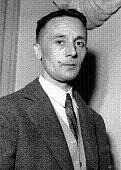
In 1938 Loire-born Surrealist novelist Julien Gracq (Louis Poirier) (1910-2007) pub. his first novel The Castle of Argol (Au Château d’Argol, a "demonic version" of Richard Wagner's 1882 opera "Parsifal". In 1945 he pub. A Dark Stranger (Un Beau Ténébreux), about lovers Allan and Dolores, who go to an isolated hotel in Brittany to kill themselves. In 1951 he pub. his biggest hit The Opposing Shore (Le Rivage des Syrtes), a "Wagnerian prelude for an unplayed opera" set on the border between Orsenna and Farghestan, which have been at war for 300 years, causing the chars. to wonder whether any change will bring about the death of both civilizations. In 1958 he pub. A Balcony in the Forest (Un Balcon en Forêt), about French Lt. Grange, who guards a bldg. in the Ardennes Forest waiting for the outbreak of WWII in fall 1939. In 1970 he pub. The Peninsula (La Presqu’île), incl. "The Road", "The Peninsula",and "King Cophetua" (filmed in 1971 by Andre Delvaux as "Rendezvous at Bray").

In 1938 Paris-born existentialist philosopher Jean-Paul Charles Aymard Sartre (1905-80) pub. his first novel (his best?) Nausea (La Nausee) , a manifesto of existentialism, about dejected 30-y.-o. Bouville ("Mud Town") (La Havre?) historian Antoine Roquentin becomes convinced that inanimate objects and situations encroach on his ability to define himself, and are absolutely indifferent to his existence, while everyday life is infused with the horrible taste of his own freedom, causing him to be "condemned to be free", resulting in you know what. In 1939 he pub. The Wall (Le Mur) (short stories); dedicated to Olga Kosakiewicz, student of Simone Beauvoir. On Oct. 22, 1964 he refuses to accept the Nobel Lit. Prize, claiming that extraneous influences might affect the power of his words, with the soundbyte: "A writer should not allow himself to be turned into an institution."



On Sept. 1, 1939 - Sept. 2, 1945 the horrific $3.5T World War II resulted in 24M military and 49M civilian deaths, and featured the low point of the Jewish Holocaust (Shoah) by the German Nazis, I guess it was the Jews' fault for not ransoming themselves to go to Israel before they could round them up for the camps. The whole experience turned Jews from lovers into fighters, ramping up the Zionist movement with full world sympathy and support by new world superpower U.S., which had its own guilt trip because on Nov. 24, 1942 Budapest-born Am. Zionist leader Rabbi Stephen Samuel Wise (1874-1949) announced in a press conference in Washington, D.C. that he was authorized by the U.S. State Dept. to confirm that the Nazis had murdered 2M Jews as part of a plan to exterminate all Jews in Europe; too bad, the nat. newspapers didn't consider it front page news, and the U.S. govt. did nada. After the war ended and Americans toured the concentration camps in horror, Polish-born Jewish scholar Raphael Lemkin (1900-59), who single-handedly led an unsuccessful campaign to get the League of Nations to give internat. protections against genocide starting in 1933 finally got what he wanted after his own people got it, namely the Dec. 9, 1948 U.N. Convention on the Prevention and Punishment of the Crime of Genocide (Gen. Assembly Resolution 260), which didn't come in force until Jan. 12, 1951, and which the U.S. still didn't ratify until 1988.

In 1942 Drean, El Taref, Algieria-born Albert Camus (1913-60) pub. The Stranger (The Outsider) (L'Etranger) (L'Étranger); French Algerian Meursault kills an Arab he recognizes in Algiers; "Mother died today. Or yesterday maybe, I don't know" (opening); inspires the song "Killing an Arab" by The Cure. In 1947 he pub. The Plague (La Peste); the plague sweeps Oran, Algeria; based on the 1849 cholera epidemic? "No, I am not an existentialist. Sartre and I are always surprised to see our names linked."

In 1943 Lyon-born French aristocrat-poet-aviator Antoine de Saint-Exupery (Antoine Marie Jean-Baptiste Roger, Comte de Saint Exupéry) (1900-44) pub. The Little Prince (Le Petit Prince); a pilot is stranded in the desert and meets a young prince fallen to Earth from house-size Asteroid B-612, who imagines himself to be a horticulturist, with a special rose, who digs on a philosophical fox, who utters the soundbytes: "One sees clearly only with the heart. What is essential is invisible to the eyes" (On ne voit bien qu'avec le coeur. L'essentiel est invisible pour les yeux), "You become responsible, forever, for what you have tamed" (Tu deviens responsable pour toujours de ce que tu as apprivoisé), "It is the time you have lost for your rose that makes your rose so important" (C'est le temps que tu as perdu pour ta rose qui fait ta rose si importante), "Grownups never understand anything by themselves, and it is tiresome for children to always be explaining things to them", "If anybody wants a sheep, that is a proof that he exists", "A single event can awaken within us a stranger totally unknown to us. To live is to be slowly born."

In 1946 after being captured in the 1940 Battle of the Meuse, escaping and fighting for the French Resistance for the rest of the war, causing him to focus on war as his central theme, Antananarivo, Madagascar-born nouveau roman novelist Claude Simon (1913-2005) pub. his first novel The Cheat (Le Tricheur). In 1947 he pub. The Tightrope (La Corde Raide). In 1952 he pub. Gulliver. In 1954 he pub. The Rite of Spring (Le Sacre du Printemps). In 1957 he pub. The Wind: Attempted Restoration of a Baroque Altarpiece (Le Vent: Tentative de Restitution d'un Rétable Baroque). In 1958 he pub. The Grass (L'Herbe). In 1960 he pub. The Flanders Road (La Route des Flandres); novelist Georges tries in vain to break with tradition. In 1962 he pub. The Palace (Le Palace). In 1966 he pub. Women: On 23 Paintings by Joan Miro (Femmes, sur 23 Peintures de Joan Miró); repub. in 1984 as "Berenice's Hair" (La Chevelure de Bérénice). In 1967 he pub. Story (Histoire) (Prix Medicis). In 1969 he pub. The Battle of Pharsalus (La Bataille de Pharsale) (Aug. 9, 48 B.C.E.). In 1971 he pub. Conducting Bodies (Les Corps Conducteurs). In 1973 he pub. Triptyque (Triptych). In 1975 he pub. Lesson in Things (Leçon de Choses). In 1981 he pub. The Georgics (Les Géorgiques). In 1987 he pub. The Invitation (L'Invitation). In 1989 she pub. The Acacia (L'Acacia). In 1997 he pub. The Garden of Plants (Le Jardin des Plantes). In 2001 he pub. The Trolley (Le Tramway). He receives the 1985 Nobel Lit. Prize "who in his novel combines the poet's and the painter's creativeness with a deepened awareness of time in the depiction of the human condition".

In 1949 the annual Feneon (Fénéon) Prize (Prix Fénéon) is established by Fanny Feneon, widow of French art critic Felix Feneon (Félix Fénéon) (1861-1944) (coiner of the term "Neo-Impressionism") for a French language writer and artist; the first award (1950) goes to Mireille Miailhe.




In 1952 Avignon, France-born Pierre Francois Marie Louis Boulle (1912-94) pub. The Bridge Over the River Kwai (Le Pont de la Rivière Kwai); English trans. pub. in 1954; British Lt. Col. Nicholson of POW Camp 16 vs. Japanese Col. Saito at the Mae Klong (Khwae Yai) River in Tha Ma Kham, Burma; filmed in 1957 by David Lean, starring Alec Guinness, William Holden, and Sessue Hayakawa. On Oct. 2, 1957 David Lean's The Bridge on the River Kwai debuts (the Mae Khlung or Klong River in real life, which is later renamed in honor of the movie), based on the 1952 Pierre Boulle novel, starring William Holden as U.S. Navy Cmdr. Shears (first Hollywood star to make $1M for a film), and Alec Guinness as British Lt. Col. Nicholson, who end up in in a kind of menage a trois with Japanese POW cmdr. Col. Saito (Sessue Hayakawa), with Guinness trying to build his bridge while Holden tries to destroy it, until Guinness does the typical British blindly-loyal-then-wakes-up-Christ-act at the last moment; the whistling song Colonel Bogey March gets airtime; writers Michael Wilson and Carl Foreman are uncredited because of Hollywood blacklisting, causing French-only novel writer Pierre Boulle to be credited alone. In 1963 he pub. The Planet of the Apes (Monkey Planet); Darwinian evolution reverses in the future as apes become sapient and humans lose the power of speech; filmed in 1968 starring Charlton Heston.

In 1953 Brest-born Alain Robbe-Grillet (1922-2008) pub. his first novel The Erasers (Les Gommes), about a detective who seeks an assassin in a future murder, and discovers it's him; erases character and plot to redo Oedipus? On May 22, 1957 Emile Henriot (1889-1961) pub. an article in Le Monde which coins the term "Nouveau Roman" (New Novel) to mean novelists who try a new style with each novel, esp. Alain Robbe-Grillet. In 1957 Robbe-Grillet pub. La Jalousie, a nouveau roman about an "absent" 3rd-person narrator who is jealous of his neighbor Franck. In 1963 he pub. Pour un Nouveau Roman (For a New Novel), which helps define the French Nouveau Roman, a movement incl. Michel Butor (1926-), Nathalie Sarraute (1900-99), and Claude Simon (1913-2005). In 1975 he pub. La Belle Captive (The Beautiful Prisoner), based on 77 surrealist paintings by Rene Magritte; filmed in 1983. In 1981 he pub. Djinn (Le Rendez-vous); narrator Simon Lecoeur introduces the reader to elements of French grammar in a textbook fashion.

In 1954 French playwright-novelist-screenwriter (bi) ("The charming little monster"- Francois Mauriac) (the J.D. Salinger of France?) Francoise Sagan (Quoirez) (1935-2004), who takes her alias from Princesse de Sagan in Marcel Proust's "A la Recherche du Temps Perdu" pub. her first novel Hello Sadness (Bonjour Tristesse) (title from a poem by Paul Eluard), which becomes an immediate internat. hit; 17-y.-o. nympho Cecile summers with her adulterous playboy father Raymond and his mistress on the French Riviera; filmed in 1957 by Otto Preminger; influences the Simon & Garfunkel song "The Sounds of Silence". In 1956 she pub. A Certain Smile (Un Certain Sourire), about 20-y.-o. Sorbonne law student Dominique, who hooks up with middle-aged businessman Luc. In 1959 she pub. Amez-vous Brahms?; filmed in 1961 as "Goodbye Again" starring Ingrid Bergman and Anthony Perkins.
In 1958 the Prix Medicis (Médicis) is founded in France by Gala Barbisan and Jean-Pierre Giraudox for a work of French fiction by an author whose "fame does not yet match his talent"; the first award goes to Claude Ollier (1922-2014) for "La Mise en scène"; in 1970 the Prix Medicis Etranger (Prix Médicis Étranger) is added to recognize a book pub. in translation; in 1985 the Prix Medicis Essai (Prix Médicis Essai) is added for nonfiction works.

In 1963 Nice-born French-Mauritian writer Jean-Marie Gustave Le Clezio (Clézio) (1940-) pub. his first novel The Interrogation (Le Procès-Verbal), about troubled Adam Pollo. In 1964 he pub. The Day Beaumont Became Acquainted with His Pain (Le Jour où Beaumont fit Connaissance avec sa Douleur); "The first time Beaumont became acquainted with his pain, he was in bed, and it must have been twenty-five past three in the morning. He turned over on the mattress, painfully, and felt the resistance of those bed-covers which took part in his turning, while in an incongruous way, opposing it. It was as if an invisible hand had twisted the material around his torso as well as his unmoving hips." (opening lines) In 1966 he pub. The Deluge (Le Déluge)., about trouble and fear in major Western cities. In 1967 he pub. Terra Amata (named after an archeological site near Nice), about ordinary man Chancelade, who overwhelms the reader with his minute perception of the world; "Chancelade has done nothing, suffered nothing, experienced nothing to make him worth our regard." (New York Times Book Reviews) In 1969 he pub. The Book of Flights: An Adventure Story (Le Livre des fuites). In 1970 he pub. The War (La Guerre). In 1973 he pub. The Giants (Les Géants). In 1975 he pub. Journeys to the Other Side (Voyages de l'autre Côté). In 1980 he pub. his breakthrough novel Desert (Désert); Moroccan boy Nour tells of the last rising of the desert tribes against the French protectorate in Morocco in 1910-12; after WWII Lalla lives in a shantytown on the Moroccan coast, befriends the Hartani, and spends time in Marseilles. The Round and Other Cold Hard Facts (Le Ronde et Autres Faits Divers) (short stories. In 1985 he pub. The Prospector (Le Chercheur d'Or), about Alexis L'Estang of Anse aux Anglais, who is obsessed with finding the treasure of the Unknown Corsair on Rodrigues Island in Mauritius and dreams about his ideal childhood before his father's bankruptcy and death, traveling there in 1910 and falling for native girl Ouma until WWI makes him return to the Battle of Ypres and Battle of the Somme. In 1991 he pub. Onitsha, about young boy Fintan, who travels from Bordeaux to Marseilles and sails along the African caost to Onitsha on the Niger River in colonial Nigeria with his Italian mother Maou in 1948. In 1992 he pub. Wandering Star (Étoile Errante), set during WWII, about French Jew Esther, who emigrates to Jerusalem, and Arab orphan Nejma, who is prevented from emigrating to Akka. In 1995 he pub. The Quarantine (La Quarantaine), narrated by Leon Archambau, about three travelers who are forced into quarantine in Mauritius. In 1997 he pub. Fish of Gold (Poisson d'Or), about an adventurous Arab girl, her brother in Morocco, and her live in a Spanish slum, Paris, and the U.S., where she dreams of becoming a jazz singer. In 1999 he pub. Hasard suivi de Angoli Mala, consisting of the novellas "Hasard", about a young girl who runs away from home after her father abandons the family and hooks up with an aging cinema producer, and "Angoli Mala", named after a legendary person cured of insanity by Buddha, about a Central Am. Indian who is destroyed by the colonialist govt. In 2000 he pub. Ghosts in the Street (Fantômes dans la Rue), about Renault. In 2003 he pub. Revolutions (Révolutions). In 2006 he pub. Ourania, set in an abandoned Jesuit seminary in the utopian Repub. of Campos on the Pacific coast of Mexico in the 1980s, narrated by 16-y.-o. Inuit Raphael. In 2008 he pub. The Refrain of Hunger (Ritournelle de la Faim), set in 1930s Paris, about Ethel Brown, who must save herself and her parents. He receives the 2008 Nobel Lit. Prize as an "author of new departures, poetic adventure and sensual ecstasy, explorer of a humanity beyond and below the reigning civilization."

In 1965 Paris-born modernist Oulipo (fan of lipograms and constrained writing) novelist-writer-filmmaker Georges Perec (1936-82) (son of Jewish Polish immigrants named Peretz) pub. his first novel Things: A Story of the Sixties (Les Choses: Une Histore des Annees Soixante) (Prix Renaudot) . In 1966 he pub. Which Moped with Chrome-Plated Handlebars at the Back of the Yard? (Quel Petit Vélo à Guidon Chromé au Fond de la Cour?) In 1967 he pub. A Man Asleep (Un Homme qui Dort); a 25-y.-o. man decides to be indifferent about the world. In 1969 he pub. The Disappearance (The Disappearance), a 300-page novel that never uses the letter "e"; English trans. "A Void" pub. in 1994. In 1975 he pub. War, or the Memory of Childhood (W ou le Souvenir d'Enfance) (semi-autobio.), and An Attempt at Exhausting a Place in Paris (Tentative d'Epuisement d'un Lieu Parisien). In 1978 he pub. Life: A User's Manual (La Vie Mode d'Emploi) (Prix Medicis), about the inhabitants of Paris apartment block 11 Rue Simon-Crubellier in the 17th arrondissement; his biggest hit, allowing him to go full-time; English trans. pub. in 1987.

In 1968 Boulogne-Billancourt-born ("the Marcel Proust of our time") Jean Patrick Modiano (1945-) pub. his first novel The Place of the Stars (La Place de l'Étoile), about French Jew Raphael Schlemilovitch; title is a play on words referring to the yellow Star of David that Jews were forced to wear by the Nazis, as well as the square around the Arc de Triomphe in Paris. In 1969 he pub. Night Rounds (Watch) (La Ronde de Nuit). In 1972 he pub. (Les Boulevards de Ceinture). In 1978 he pub. Missing Person (Rue des Boutiques Obscures) (The Street of Dark Shops), set on the Via delle Botteghe Oscure in Rome, where Modiano once lived, about amnesiac detective Guy Roland. In 1981 he pub. Memory Lane. In 1984 he pub. A Trace of Malice (Quartier Perdu). In 1988 he pub. Catherine Certitude. In 1990 he pub. Honeymoon (Voyage de Noces). In 1997 he pub. Dora Bruder (The Search Warrant). In 2010 he pub. L'Horizon. In 2012 he pub. Night Grass (L'Herbe de Nuit). He receives the 2014 Nobel Lit. Prize "for the art of memory with which he has evoked the most ungraspable human destinies and uncovered the life-world of the occupation."

In 1986 Paris born police thriller novelist-historian-archeologist Fred Vargas (Frederique) (Frédérique) Audoin-Rouzeau (1957-) (named after Ava Gardner's char. in the 1954 film "The Barefoot Contessa"), pub. her first novel The Game of Love and Death (Les Jeux de l'Amour et de la Mort), followed by The Chalk Circle Man (L'Homme aux Cercles Bleus) (Dagger Award), first in a series about Paris Commissaire Adamsberg, who is into Zen research methods with white wine-loving deputy Adrien Danglard, and gets into it with musician-plumber Camille Forestier, followed by Seeking Whom He May Devour (The Inside-Out Man) (L'Homme à l'Envers) (1999) (title from Peter I 5:8), about Commissaire Adamsberg investigating werewolves in a remote French village, The Four Rivers (Le Quatre Fleuves) (w/Edmond Baudoin) (2000), Have Mercy on Us (Pars Vite et Reviens Tard) (Leave Quickly and Come Back Late) (2001), Wash This Blood Clean from My Hand (Sous les Vents de Neptune) (2004), winner of the first-ever CWA Internat. Dagger Award, The Night's Foul Work (Dans les bois Éternels) (2006) (Dagger Award), An Uncertain Place (Un Lieu Incertain) (2008) (Dagger Award), The Ghost Riders of Ordebec (L'Armée Furieuse) (2013) (Dagger Award), and The Ice Ages (Temps Glaciaires) (2015). In 1994 she pub. Those Who Are About to Die Salute You (Ceux qui vont Mourir te Saluent). In 1995 she pub. The Three Evangelists (Debout les Morts), first in a series about three historians known as the Three Evangelists incl. Matthias Dellamarre (St. Matthew) (prehistory), Marc Vandoosler (St. Mark) (Middle Ages), and Lucien Devernois (St. Luke) (WWI), who move into the old Disgrace House along with Marc's godfather Armand "Old Man" Vandoosler, a former police commissioner, and get into it with their neighbor, retired opera singer Sophia Simeonidis, followed by A Dog Will Have His Day (Un Peu Plus Loin sur la Droit) (2014), and Sans Feu ni Lieu (1997).

In 1994 Reunion Island-born Michel Houellebecq (Thomas) (1956-) pub. his first novel Whatever (Extension du domaine de la lutte) (Broadening of the Struggle's Domain) (Serpent's Tail) (first novel); "Our Hero" computer programmer Harel hasn't had sex for over two years. In 1998 he pub. Atomised (Les Particules Elementaires); half-brothers Michel and Bruno. In 2001 he pub. Platform; 40-y.-o. male arts administrator Michel Renault tells about his romance, along with sex tourism, and disses Islam. In 2001 he gives an interview in which he calls Islam "the stupidest religion", and is hauled into court for inciting racial hatred, but charges are dismissed. In 2006 he pub. The Possibility of an Island, about a Raelian-type cult that clones successful comedian Daniel twice (Daniel I, 24, 25).

In 1996 Bayonne-born Marie Darrieussecq (1969-) pub. her first novel Pig Tales: A Novel of Lust and Transformation, an internat. bestseller (300K copies) about a woman who is slowly transformed into a sow, becoming the most popular French first novel since the 1950s. In 1998 she pub. My Phantom Husband, about a woman whose husband disappears, causing her to search for him. In 1999 she pub. Breathing Underwater (Undercurrents); a young mother and daughter flee to the Basque coast, causing the father to recover her, after which she heads for Australia, surrounded by her beloved omnipresent ocean. In 1999 she pub. Clarifications on the Waves (Précisions sur les Vagues), a poetic description of marine phenomena. In 2001 she pub. A Brief Stay with the Living, which gets into the heads of a family of four. In 2002 she pub. The Baby (Le Bébé), an autobio. novel about her new baby, complaining of the lack of babies as subjects in lit. In 2003 she pub. White, about engineers Peter and Edmee on an isolated base in the South Pole. In 2005 she pub. The Country (Le Pays), about writer Marie Riviere, who leaves Paris with her 2-y.-o. child to live with her parents in a trailer in the country. In 2006 she pub. Zoo (short stories). In 2007 she pub. Tom is Dead (Tom est Mort), about a woman who lost her son 10 years earlier and is emotionally destroyed. In 2013 she pub. It Takes a Lot to Love Men (Il faut beaucoup aimer les hommes) (Prix Medicis).

In 1999 philosopher-novelist Gwenaelle (Gwenaëlle) Aubry (1971-) pub. her first novel The Devil Spotter (Le Diable Détacheur), about a teenie girl who is haunted by the figure of Persephone and has the hots for a mature man. In 2002 she pub. The Detached (L'Isolée), about prisoner Margot, distant sister of Florence Rey, and her love for Peter. In 2003 she pub. The Isolation (L'Isolement). In 2007 she pub. Our Life is Used in Transfigurations (Notre vie s'use en Transfigurations), the inner monologue of an ugly woman on the aesthetic indifference of the beautiful and the ugly, and The (Dis)Taste of Ugliness (Le (Dé)goût de la Llaideur) (anthology). In 2009 she pub. Person (Personne), about her father who suffered from manic depression and left a diary.
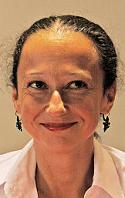
In 2000 Casablanca, Morroco-born Muriel Barbery (1969-) pub. her first novel Une Gourmandise (English trans. "Gourmet Rhapsody" pub. in 2009). In Aug. 2006 she pub. The Elegance of the Hedgehog (L'Élégance du hérisson) (English trans. pub. in Sept. 2008), which becomes an internat. bestseller (1M copies), about the intellectual inhabitants of a small upper-class Paris apt. block, narrated by concierge Renee Michel and Paloma Josse.